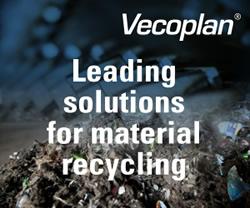Game-Changing Innovation for the Solar Industry
Arizona's Solar Bankers and Dresden affiliate Apollon have developed cost-efficient outperforming solar module
Arizona/Dresden - The Arizona-based Solar Bankers LLC and its Dresden-based affiliate Apollon GmbH & Co. KG have commonly developed a game-changing module technology that will impact the entire solar industry. A prototype of the high-efficiency concentrated solar module composed of a silicon cell and a holographic foil is now finished. The new innovative module has already been patented in the US. It is ready to be produced at values defying today's market prices while generating twice as more energy as regular solar modules. Thanks to its patented technology, production costs for this solar module are even significantly lower as other manufacturers including Chinese ones. Reaching parity with fossil fuel energy prices is now reality.
In association with its affiliate Apollon and German engineers, Solar Bankers has developed solar modules, whose economic viability and efficiency exceeds those of existing technologies. The panels are produced using proven quality technology, enabling a high-quality module production at extremely low prices. "With the patent, the production costs of our solar modules are clearly under those of Chinese manufacturers even if we decide to build the modules in Germany or the USA," explains Alfred Jost, President of Solar Bankers. For several years, Jost was in charge of Product Development and Structured Financing at J.P. Morgan before re-orienting himself towards the acquisition and debt restructuring of companies in financial distress, which led him to work in the field of renewable energy.
The new technology is at the same time simple, efficient and cost-effective: Through light selection, deflection and concentration it is possible to convert up to 28 % of the sunlight into electricity. Today's market average is 17 %. In fact Apollon and Solar Bankers expect even better results soon. "Our solution addresses the major downsides that make today's photovoltaic (PV) technologies unprofitable. These disadvantages arise mainly from the material silicon as well as from efficiency losses, which result e.g. through heat occurring from concentration" declares Jost.
The new high-efficiency module is a consequence of advanced Concentrated Solar Photovoltaic module development. Contrary to today's PV modules, this system only needs a fraction of the semiconductor material while the performance per square meter of the module surface is almost twice as high as conventional PV. The module is based on a holographic optic, which is a strong contrast to other concentrator photovoltaic modules using expensive flat lenses (e.g. Fresnel lenses): "The holographic element is printed on the cover glass and filters the sunlight hitting the solar cell. The printing process allows a economical duplication and simultaneously saves laser and development work, usually necessary when using holographic elements," says Jost. In contrast to other concentrator modules the distance between optic and solar cell is only a few millimeters and filters only the desirable wavelengths of the light. The sunlight is then concentrated on the solar cells. "Thanks to this specific wavelength selection, we avoid overheating issues usually generated by concentrated technologies which are today the source of significant efficiency losses," explains Jost.
The new module continues to use silicon as the solar cell material. "With the holographic optic a 20- to 30-times concentration of the desirable wavelengths of the light makes a silicon needs reduction by over 90 % compared to the amount of silicon used in standard solar modules possible", explains Jost. "The amount of silicon used in our prototype can be measured in millimeters, reaching barely 3% of the total module area. Since solar cells account for more than half of module prices today, we achieve here considerable savings with comparable or higher efficiency values being possible. The rest of the module can optionally be left empty or be used as a kind of hybrid solar module, for example using solar thermal technology. The combination of both reduced raw material costs and higher efficiency levels is the key to achieve favorable energy generation costs. With our technology grid parity can finally be reached. Soon such solar panels will become standard, affordable household products", concludes Solar Bankers' President Jost. The objective is to put in place a 300 MW production capacity in the USA or in Germany and create 500 jobs by doing so.
For more information visit: www.solarbankers.com or www.apollon.asia
Featured Product

